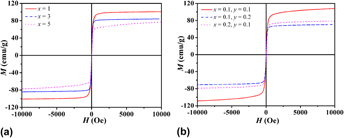Crossref Citations
This article has been cited by the following publications. This list is generated based on data provided by
Crossref.
Wang, Tong
Yin, Yajun
Zhou, Jianxin
Shen, Xu
and
Wang, Min
2018.
Optimal riser design method based on geometric reasoning method and fruit fly optimization algorithm in CAD.
The International Journal of Advanced Manufacturing Technology,
Vol. 96,
Issue. 1-4,
p.
53.
Liu, Peng Fei
Chen, Wen Jun
Li, Jun Jun
Zhou, Ru Long
and
Zhang, Bo
2018.
Iron-Based Amorphous Magnetic Properties by Ni Content Tuning and Isothermal Treatment.
Materials Science Forum,
Vol. 913,
Issue. ,
p.
661.
Zhu, Man
Zhang, Mao
Yao, Lijuan
Nan, Ruihua
Jian, Zengyun
and
Chang, Fang'e
2019.
Effect of Mo substitution for Nb on the glass-forming ability, magnetic properties, and electrical resistivity in Fe80(Nb1–xMox)5B15 (x=0–0.75) amorphous ribbons.
Vacuum,
Vol. 163,
Issue. ,
p.
368.
Yao, Lijuan
Zhu, Man
Li, Kun
Jian, Zengyun
and
Chang, Fang’e
2020.
Glass formation, nanocrystallisation and magnetic properties of the (Fe1–xCox)79Nb3B18 (x = 0, 0.15, 0.3, 0.45, 0.6, 0.75) metallic glasses.
International Journal of Materials Research,
Vol. 111,
Issue. 7,
p.
600.
Boichyshyn, L. M.
Hertsyk, О. М.
Lopachak, М. М.
Kovbuz, М. О.
Hula, Т. H.
and
Pandyak, N. L.
2020.
Electrochemical Properties of Ternary Amorphous Alloys Based on Iron and Cobalt in Alkali Solutions.
Materials Science,
Vol. 55,
Issue. 5,
p.
703.
Lopachak, Mariia
Kovbuz, Myroslava
Hertsyk, Oksana
Hula, Tetiana
Boichyshyn, Lidiya
and
Khrushcyk, Khrystyna
2020.
Influence of Fe/Co Substitution and Nb Doping on Thermal Stability of Fe/Co-Si -B Alloys.
p.
01NMM06-1.
Zhu, Man
Zhang, Chi
Xu, Tao
Yao, Lijuan
Liu, Yongqin
Cai, Mengmeng
and
Jian, Zengyun
2021.
Glass formation, magnetic properties, and electrical resistivity of the multi-component FeNbBCuNiCo amorphous alloys.
International Journal of Materials Research,
Vol. 112,
Issue. 2,
p.
137.
Warski, Tymon
Radon, Adrian
Zackiewicz, Przemyslaw
Wlodarczyk, Patryk
Polak, Marcin
Wojcik, Anna
Maziarz, Wojciech
Kolano-Burian, Aleksandra
and
Hawelek, Lukasz
2021.
Influence of Cu Content on Structure, Thermal Stability and Magnetic Properties in Fe72−xNi8Nb4CuxSi2B14 Alloys.
Materials,
Vol. 14,
Issue. 4,
p.
726.
Hertsyk, О. М.
Kovbuz, М. О.
Hula, Т. H.
Korniy, S. А.
Yezerska, O. A.
and
Pandiak, N. L.
2021.
Corrosion Resistance of Modified Amorphous Alloys Based on Iron in Sulfuric Acid.
Materials Science,
Vol. 56,
Issue. 6,
p.
755.
Wang, Tong
Zhou, Jianxin
Wang, Lei
Zhang, Zelin
Zhang, Huan
and
Xia, Xuhui
2023.
Research and Development of Gating and Riser Process Optimization Integrated System for Steel Casting.
International Journal of Metalcasting,
Vol. 17,
Issue. 4,
p.
2452.
Tiwari, Saurabh
Ryu, Wook Ha
Kim, Kyung Jun
and
Park, Eun Soo
2023.
Development of (Fe-Co-Ni)-Si-B metallic glass catalyst for promoting degradation of acid orange II azo-dye.
Journal of Alloys and Compounds,
Vol. 961,
Issue. ,
p.
171027.





